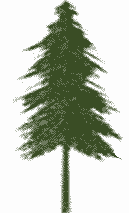Translate this page:
Summary
Beach sugar apple or Annona salzmannii is a tropical, evergreen tree native to Brazil that can grow up to 12 - 15 m tall. It has an elongated, fairly open crown. The leaves are thick and leathery. Near the axils of the leaves are the flowers that occur either alone or in pairs. The heart-shaped, orange fruit of beach sugar apple has a very sweet, succulent pulp that is fibreless and very appetizing. It can be eaten raw, fresh from the tree. The wood is used for fuel and charcoal-making.
Physical Characteristics

 Annona salzmannii is an evergreen Tree growing to 12 m (39ft) by 10 m (32ft) at a slow rate.
Annona salzmannii is an evergreen Tree growing to 12 m (39ft) by 10 m (32ft) at a slow rate.
See above for USDA hardiness. It is hardy to UK zone 10. The plant is self-fertile.
Suitable for: light (sandy) and medium (loamy) soils, prefers well-drained soil and can grow in nutritionally poor soil. Suitable pH: mildly acid, neutral and basic (mildly alkaline) soils and can grow in saline soils.
It can grow in semi-shade (light woodland) or no shade. It prefers moist soil and can tolerate drought. The plant can tolerates strong winds but not maritime exposure.
UK Hardiness Map
US Hardiness Map
Synonyms
No synonyms are recorded for this name.
Plant Habitats
Edible Uses
Edible Parts: Fruit
Edible Uses:
Fruit - raw[ 377 ]. The succulent pulp is very sweet, fibreless and very tasty[ 377 , 416 , 625 ]. The green skinned fruit can be 10cm long and 9cm wide, weighing up to 450g[ 377 , 625 ].
References More on Edible Uses
Medicinal Uses
Plants For A Future can not take any responsibility for any adverse effects from the use of plants. Always seek advice from a professional before using a plant medicinally.
None known
References More on Medicinal Uses
The Bookshop: Edible Plant Books
Our Latest books on Perennial Plants For Food Forests and Permaculture Gardens in paperback or digital formats.

Edible Tropical Plants
Food Forest Plants for Hotter Conditions: 250+ Plants For Tropical Food Forests & Permaculture Gardens.
More

Edible Temperate Plants
Plants for Your Food Forest: 500 Plants for Temperate Food Forests & Permaculture Gardens.
More

More Books
PFAF have eight books available in paperback and digital formats. Browse the shop for more information.
Shop Now
Other Uses
Charcoal Fuel
Other uses rating: Medium (3/5). Cherimoya can be used in agroforestry systems as a fruit tree. It provides shade and can be integrated into diverse cropping systems.
The wood is light in weight, with moderate resistance to insect attack, and difficult to saw and cut[ 625 ]. It is only used for fuel and to make charcoal[ 625 ]. 1. Nectary - Flowers rich in nectar and pollen:
Yes – Many Annona species (such as cherimoya, soursop, and sugar apple) have flowers that attract pollinators, particularly beetles, because of their pollen.
2. Wildlife - Food (Fruit, Seeds, Leaf litter, Shelter, Nesting, Roosting):
Yes, the fruits of the Annona species are edible and can feed wildlife, while their foliage may provide shelter and nesting spots for birds and other small animals.
3. Invertebrate Shelter (Overwintering sites, Leaf litter, Groundcover):
Yes – The leaf litter from Annona trees can provide shelter for invertebrates, and their bark may offer overwintering sites for certain insects.
4. Pest Confuser (Smell):
No – Annona species do not produce strong, aromatic smells known to confuse or repel pests.
Special Uses
Food Forest
References More on Other Uses
Cultivation details
A plant of lowland tropical areas[ 377 , 416 ]. Prefers a sunny position[ 625 ]. Prefers a well-drained, sandy soil[ 625 ]. Succeeds on saline soils[ 625 ]. When is it harvested?
Late Autumn to Early Winter.
When does it flower?
Late Spring to Early Summer.
Are there any agroforestry uses?
How fast does it grow?
Cherimoya has a moderate growth rate and can take about 3 to 4 years to start producing fruit after planting.
References Carbon Farming Information and Carbon Sequestration Information
Temperature Converter
Type a value in the Celsius field to convert the value to Fahrenheit:
Fahrenheit:
The PFAF Bookshop
Plants For A Future have a number of books available in paperback and digital form. Book titles include Edible Plants, Edible Perennials, Edible Trees,Edible Shrubs, Woodland Gardening, and Temperate Food Forest Plants. Our new book is Food Forest Plants For Hotter Conditions (Tropical and Sub-Tropical).
Shop Now
Plant Propagation
Seed - it has a very hard outer layer and germinates much more easily if scarified[ 625 ]. This can usually be done by pouring a small amount of nearly boiling water on the seeds (being careful not to cook them!) and then soaking them for 12 - 24 hours in warm water. By this time they should have imbibed moisture and swollen - if they have not, then carefully make a nick in the seedcoat (being careful not to damage the embryo) and soak for a further 12 hours before sowing. Sow the seeds in individual containers in a lightly shaded position. Germination rates of scarified seeds can above 95%, with the seeds sprouting within 40 - 50 days[ 625 ].
Other Names
If available other names are mentioned here
Beach sugar apple or Annona salzmannii
Native Range
SOUTHERN AMERICA: Brazil, Bahia,
Weed Potential
Right plant wrong place. We are currently updating this section.
Please note that a plant may be invasive in one area but may not in your area so it's worth checking.
None Known
Conservation Status
IUCN Red List of Threatened Plants Status : This taxon has not yet been assessed.

| Related Plants
|
| Latin Name | Common Name | Habit | Height | Hardiness | Growth | Soil | Shade | Moisture | Edible | Medicinal | Other |
| Annona atemoya | Atemoya | Tree | 8.0 |
10-12
| F | LMH | N | D | 5 | 0 | 2 |
| Annona cherimola | Cherimoya, Custard Apple | Tree | 9.0 |
8-12
| F | LMH | N | DM | 5 | 2 | 3 |
| Annona liebmanniana | Hardshell custard-apple, Posh-te | Tree | 20.0 |
9-12
| F | LMH | SN | MWe | 4 | 0 | 0 |
| Annona mucosa | Wild Sweetsop | Tree | 12.0 |
10-12
| F | LMH | N | M | 5 | 1 | 3 |
| Annona muricata | Sour Sop | Tree | 7.0 |
10-12
| F | LMH | SN | M | 4 | 3 | 2 |
| Annona squamosa | Sugar Apple, Sweetsop, Custard Apple | Tree | 6.0 |
10-12
| M | LM | N | DM | 5 | 2 | 2 |
| Annona vepretorum | Araticum, Pinha da Caatinga, Araticum-da-bahia | Tree | 6.0 |
10-12
| S | LMH | N | D | 4 | 0 | 2 |
| Asimina triloba | Papaw | Shrub | 4.5 |
5-8
| S | M | SN | M | 4 | 2 | 3 |
| Cananga odorata | Ylang Ylang, Perfume Tree | Tree | 20.0 |
10-12
| F | LMH | SN | M | 2 | 3 | 4 |
| Oxandra lanceolata | Black lancewood, lancewood, haya prieta | Tree | 10.0 |
10-12
| M | LMH | N | M | 0 | 0 | 4 |
| Oxandra laurifolia | Yaya, lancewood | Tree | 10.0 |
10-12
| M | LMH | N | M | 0 | 0 | 4 |
|
Growth: S = slow M = medium F = fast. Soil: L = light (sandy) M = medium H = heavy (clay). pH: A = acid N = neutral B = basic (alkaline). Shade: F = full shade S = semi-shade N = no shade. Moisture: D = dry M = Moist We = wet Wa = water.
Now available:
Food Forest Plants for Mediterranean Conditions
350+ Perennial Plants For Mediterranean and Drier Food Forests and Permaculture Gardens.
[Paperback and eBook]
This is the third in Plants For A Future's series of plant guides for food forests tailored to
specific climate zones. Following volumes on temperate and tropical ecosystems, this book focuses
on species suited to Mediterranean conditions—regions with hot, dry summers and cool, wet winters,
often facing the added challenge of climate change.
Read More
Expert comment
Author
A.DC.
Botanical References
Links / References
For a list of references used on this page please go here
A special thanks to Ken Fern for some of the information used on this page.
Readers comment
| Add a comment |
|
If you have important information about this plant that may help other users please add a comment or link below. Only comments or links that are felt to be directly relevant to a plant will be included. If you think a comment/link or information contained on this page is inaccurate or misleading we would welcome your feedback at [email protected]. If you have questions about a plant please use the Forum on this website as we do not have the resources to answer questions ourselves.
* Please note: the comments by website users are not necessarily those held by PFAF and may give misleading or inaccurate information.
To leave a comment please Register or login here All comments need to be approved so will not appear immediately.
|
Subject : Annona salzmannii
|
|
|
|